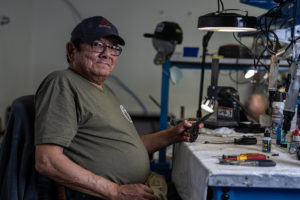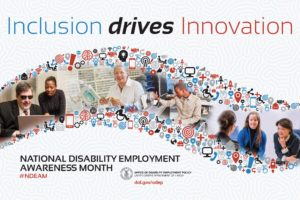Yesterday saw the close of the NISH Northwest and Pacific West Joint NCWC Conference in our hometown of Portland, Oregon. We enjoyed having the opportunity to share thoughts and strategies on increasing the employment of people with disabilities with other not-for-profit organizations working towards the same end. We strongly believe we need a multi-sector approach to employing people with disabilities.
Moreover, it was encouraging to have leadership involved in the AbilityOne® program enthusiastic about DePaul Industries’ model. We’re using staffing to leverage business, in order to get as many people with disabilities into work as quickly and efficiently as possible. “NISH is very excited about the DePaul Industries model, recognizing that collaborating with business is crucial if we’re going to create a bigger pool of job opportunities,” said Bob Chamberlin, President & CEO of NISH. “NISH nonprofits, and therefore people with disabilities, can benefit from this staffing employment model.” In order to do this, we need a multi-sector approach—of which the biggest slice should be the private sector.
The Problem: High Unemployment and Low Workforce Participation of People with Disabilities
Here’s the reasoning: In the United States, the rate of unemployment for people with disabilities is twice that of people without disabilities.

But it’s actually even worse than that. Of the total number of working-age people with disabilities in the U.S., only one-third are participating in the workforce. ‘Participation’ here means you either have a job or you’re actively looking for one. By way of contrast, three-quarters of working-age people without disabilities are participating in the workforce.

With this disparity as a backdrop, DePaul believes it must close the gap between unemployment of people with disabilities and people without disabilities by scaling its model.
Running the numbers on these statistics, it will require approximately 6.4 million jobs to be filled by people with disabilities in order to close this gap. It’s important to leverage the current systems within the nonprofit sector and the governmental sector working to create jobs for people with disabilities. Yet neither of those two sectors have the numerical capacity to create the total number of jobs needed. The only sector with the realistic capacity to create those jobs is the commercial sector.

Figures from Bureau of Labor Statistics’ Persons with a Disability: Labor Force Characteristics 2011 Report
& the National Center for Charitable Statistics (NCCS)
A Multi-Sector Approach is Key to Solving This Problem
This can all sound daunting, but we believe that if the problem is big, you set your sights big. The key here is that isn’t just a theory or a pipe dream—we’re doing this every day by listening to our customers, answering to demand, and providing them with workforce solutions that improve their bottom line. It just so happens that those solutions help people with disabilities get jobs.
We’re thrilled that NISH leadership and many fellow employment organizations walked away from the conference feeling engaged with a focus on the commercial sector. In order to achieve our vision of closing the gap of employment between people with and without disabilities, it’s going to take true collaboration across all sectors. With widespread adoption by nonprofit organizations, this employment approach has the potential to catalyze sweeping change in both the way we think about disability employment and the way that disability employment can improve the bottom line.
Interested in learning more? Find out about our current disability employment in Portland and beyond, hear about our model on a New Empire Builders podcast, or leave a comment below.




